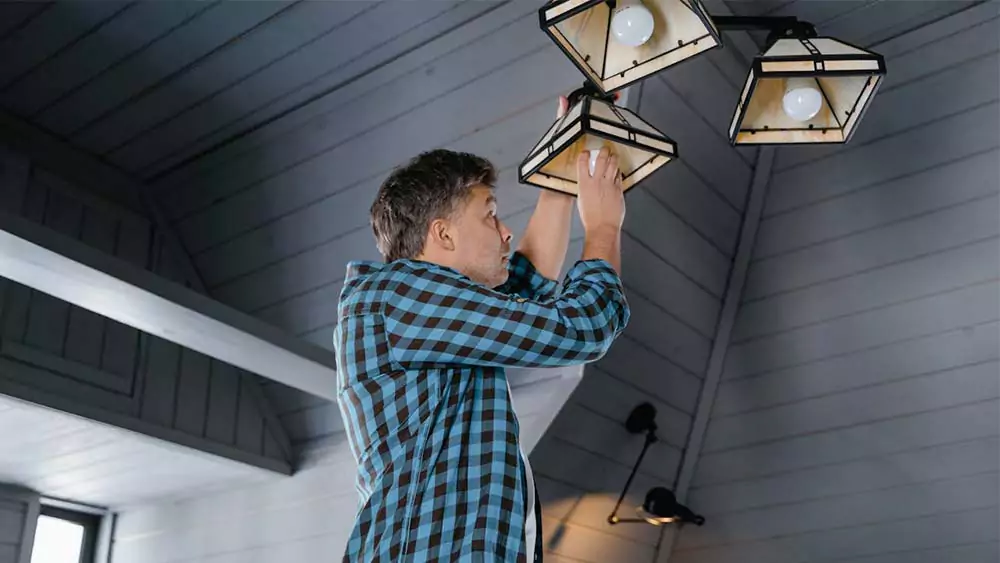How to Safely Handle Electrical Problems at Home

Electrical issues in the home can often lead to significant dangers if not addressed properly. Whether it’s flickering lights or an unusual burning smell, it is essential to approach these problems with caution and knowledge. Understanding how to react safely can make a significant difference in preventing injury and damage. This article will explore effective strategies for managing home electrical problems safely to protect your home and family.
Common electrical problems at home—from faulty outlets to frequent power surges—can pose safety hazards. Learn how to prevent electrical fires and keep your home secure.
1. Recognizing Electrical Problems

The first step in handling electrical problems safely is recognizing the signs. Common signs of electrical problems include flickering lights, tripped circuit breakers, and outlets that feel warm to the touch. Each of these symptoms can indicate underlying issues that require immediate attention. Flickering lights might suggest a loose bulb or faulty wiring, while repeatedly tripped circuit breakers could mean that a circuit is overloaded or that there’s a short circuit somewhere in the home. Understanding these symptoms is crucial.
These symptoms often suggest an underlying issue that needs immediate attention. Inspecting your home’s electrical systems thoroughly can alert you to potential dangers before they escalate. Homeowners should conduct regular checks to identify such signs early on to maintain a safe environment. Electrical issues can escalate quickly, leading to dangerous situations or extensive damage. Always err on the side of caution and address these issues as soon as they arise.
2. Understanding the Risks
Electricity poses inherent risks that can lead to severe accidents or damage. Electrical fires are a leading cause of home fires across the world, and knowing the risks is vital for prevention. According to the National Fire Protection Association, electrical failures or malfunctions account for over 47,000 residential fires annually in the United States. Understanding these statistics highlights the significance of addressing any flickering lights or malfunctioning outlets promptly to mitigate risks before they become hazardous.
3. When to DIY and When to Call for Professionals

Certain electrical issues can be managed by a savvy homeowner with basic knowledge and skills. Simple tasks like changing light fixtures or replacing outlets are generally within the wheelhouse of a DIY enthusiast. However, professionals at https://www.landrymechanical.com/ recommend that more complex problems—such as rewiring circuits, dealing with circuit breakers, or handling any work involving the main electrical panel—should be left to trained and certified electricians. Many electrical problems call for the expertise of licensed electricians to ensure safety and compliance with local codes. If the problem persists after basic troubleshooting, or if you encounter suspected electrical fires, contact professionals immediately. Additionally, projects involving extensive rewiring or installing new circuits typically require a professional touch. Electricians can provide thorough inspections, offer tailored solutions, and ensure all work meets safety regulations. Failing to rely on qualified individuals can risk both personal safety and the overall integrity of the electrical system in your home.
4. Personal Safety First
Before engaging with any electrical issue, safety should be your top priority. Start by turning off the power at the circuit breaker. This ensures that no electricity is flowing to the area where you’ll be working. Use a voltage tester to verify that the power is off before touching any wires or outlets. Wearing insulated gloves and using insulated tools can also help to safeguard against accidental shocks. While it may be tempting to tackle minor electrical repairs without safety gear, it’s important to remember that the risks are not worth the reward. Adopting proper protective measures can significantly reduce your risk of electrical shock and injury.
5. Basic Troubleshooting Techniques

Basic troubleshooting can help assess the situation more clearly. Start by checking if other outlets or switches are functioning. If they are not, the problem may lie deeper within the circuit. Inspect your home for signs of damage, such as frayed wires or corroded connections, but do not attempt repairs unless you have the proper training. Making minor adjustments or resets, such as flipping the breaker back on or tightening loose screws on outlets, can sometimes resolve simple issues without needing significant repairs. However, never ignore more complex issues, as they often require professional intervention.
6. Preventative Measures for the Future
Preventative measures can greatly reduce the likelihood of electrical problems occurring in the first place. Regular inspections of wiring, outlets, and appliances can identify degrading components before they become problematic. Using surge protectors can also protect sensitive electronics from power surges. Furthermore, staying informed about the age of the home’s electrical systems allows homeowners to make proactive decisions on upgrades or replacements.
Closing Statement:

Knowledge and vigilance create a safer environment, minimizing unnecessary risks associated with readily overlooked electrical issues. Keeping your home safe from electrical hazards requires awareness, precaution, and occasional professional assistance. By observing signs of electrical trouble, prioritizing personal safety, conducting basic troubleshooting, and knowing when to call for professional help, you create a solid foundation for managing electrical problems. Emphasizing preventive measures allows you to protect your home and family from potential electrical disasters.
Related Content: Smart Home Gadgets for Optimal Safety

news via inbox
Sign up and never miss out on the latest news and updates at HighStuff




